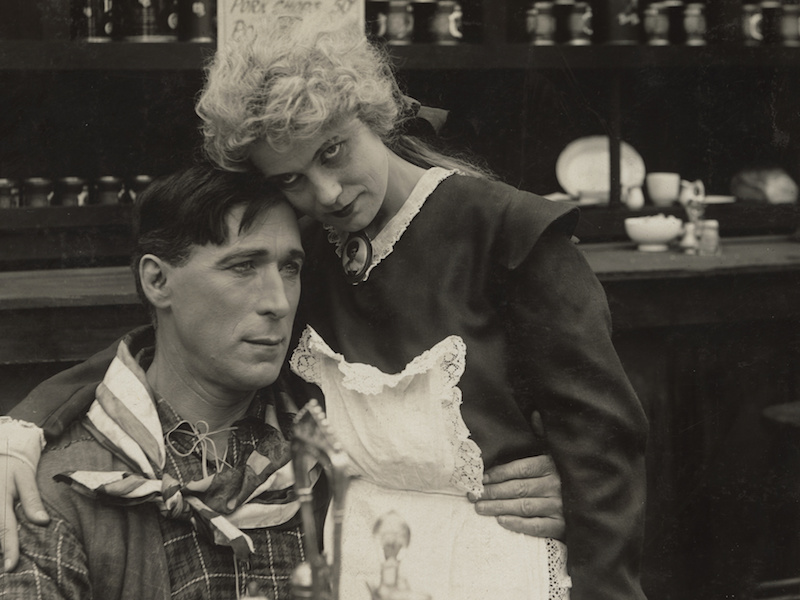A KNIGHT OF THE TRAILS
William S. Hart (US 1915)
In the western town of Canyon City, Molly Stewart, a waitress at the OK Restaurant, is engaged to marry Jim Treen, whom she does not realize is an outlaw, wanted for a $1,000 reward. Bill Carey, an Easterner sent West to sucker gold miners out of their stakes, discovers surreptitiously that Molly has bank savings of $805. Cleaning Jim’s cluttered cabin one day, Molly discovers his loot of jewels and money hidden under the floorboards, refuses to believe his plea of going straight, and breaks their engagement. Jim returns the loot anonymously to the sheriff, but soon Carey persuades Molly not only to marry him but also to entrust her savings to him. After Carey steals away on the stage to catch a train back East, the restaurant owner finds Jim drinking in the Eldorado saloon and shows him Carey’s “farewell” letter. Jim races off on horseback, taking a mountain short cut, and confronts Carey at the Kings River Junction rail station. Jim retakes the bank savings; in the ensuing gunfight he is wounded, and Carey is killed. In a brief denouement, Molly forgives him, and the couple apparently marry.
This print comes from a 1923 Tri-Stone reissue, with new intertitles stamped with overly stereotypical graphics. In October 1915, Motion Picture Magazine published a story based on the original film in which Molly is an equally deceptive figure, despite being so naïve, and Jim, in the climax, simply knocks Carey’s gun away and seizes Molly’s pouch of money. The film is unusual in having Hart introduced as engaged to be married, but it also follows the familiar narrative arc of the bad man transformed by love. Hart mounts the story clearly, efficiently, with crucial close shots of the ring Jim puts on Molly’s finger, of the bank ledger that Carey spots, and of Molly’s shoe sinking slightly into the cabin rug, revealing the loose floorboard and cache of loot. By contrast, several long shots stand out: the exterior of the OK Restaurant has a wide, second-floor balcony for customers to sit outside; Jim races on horseback through the town’s broad main street, a lone figure bent on revenge; and, of course, Hart displays some skillful riding, first on a dirt road and then up and over a mountain trail. Finally, the film includes an early appearance of Frank Borzage on screen.
Richard Abel


regia/dir: William S. Hart.
scen: Richard V. Spencer, Thomas H. Ince.
photog: Robert Doeran.
cast: William S. Hart (Jim Treen), Leona Hutton (Molly Stewart), Frank Borzage (W. [Bill] Sloane Carey).
prod: New York Motion Picture Co., supv: Thomas H. Ince.
dist: Mutual/Kay-Bee.
uscita/rel: 20.08.1915.
copia/copy: DCP, 26′ (da/from 35mm nitrate, 770 ft.); did./titles: ENG.
fonte/source: George Eastman Museum, Rochester, NY.




